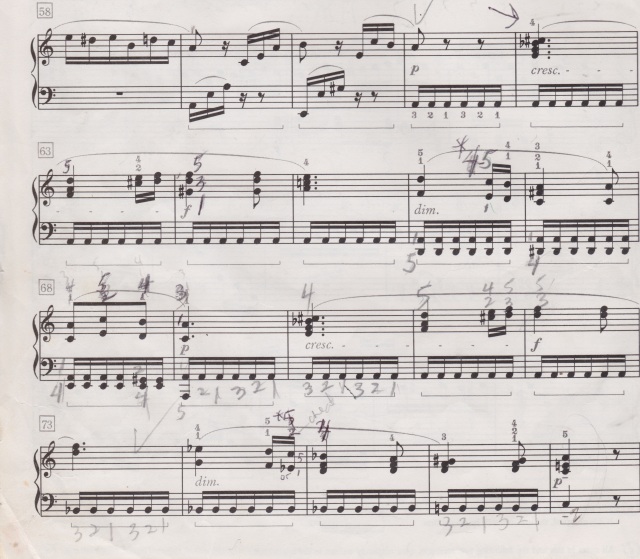It’s a challenge to play scales, arpeggios, and passages lifted out of the mainstream Classical piano repertoire with a well-shaped and nicely spaced legato. (smooth and connected playing) But it can be more daunting to navigate particular sections of masterworks that have legato markings over chords, for instance, that carry a melodic thread that is impossible to realize seamlessly without compromise, and a shift in consciousness.
By example, I refer to Beethoven’s Fur Elise, measures 62-68, that’s easily characterized as a “stormy” section with its relentless tremolo in the (Bass) Left Hand, while the Right hand above, has the task of “voicing” chords that carry a haunting melody in the soprano. In order to obey the notation of slurs over a procession of chords, thirds, and sixths, with a melody to flesh out at the very top, the player has to devise a means of preserving a smooth melodic flow, by letting go of certain fingers in deference others.

The sustain pedal is pivotal to the whole undertaking, because it can hold down elements of chords that would otherwise be missing or lost in the prioritizing of melodic movement in the uppermost voice. However, the pedal cannot replace a well thought out finger-connecting strategy that shores up the legato, albeit with some missing ingredients in lower voices, that will be filled in by well-conceived pedaling.
In the attached video, I model an approach to the “stormy” section that creates an illusion of legato by demonstrating fingering choices in concert with maneuvers of the arm, wrist, and hand.
from Arioso7's Blog (Shirley Kirsten)
https://arioso7.wordpress.com/2016/10/11/piano-technique-creating-an-illusion-of-legato/
No comments:
Post a Comment